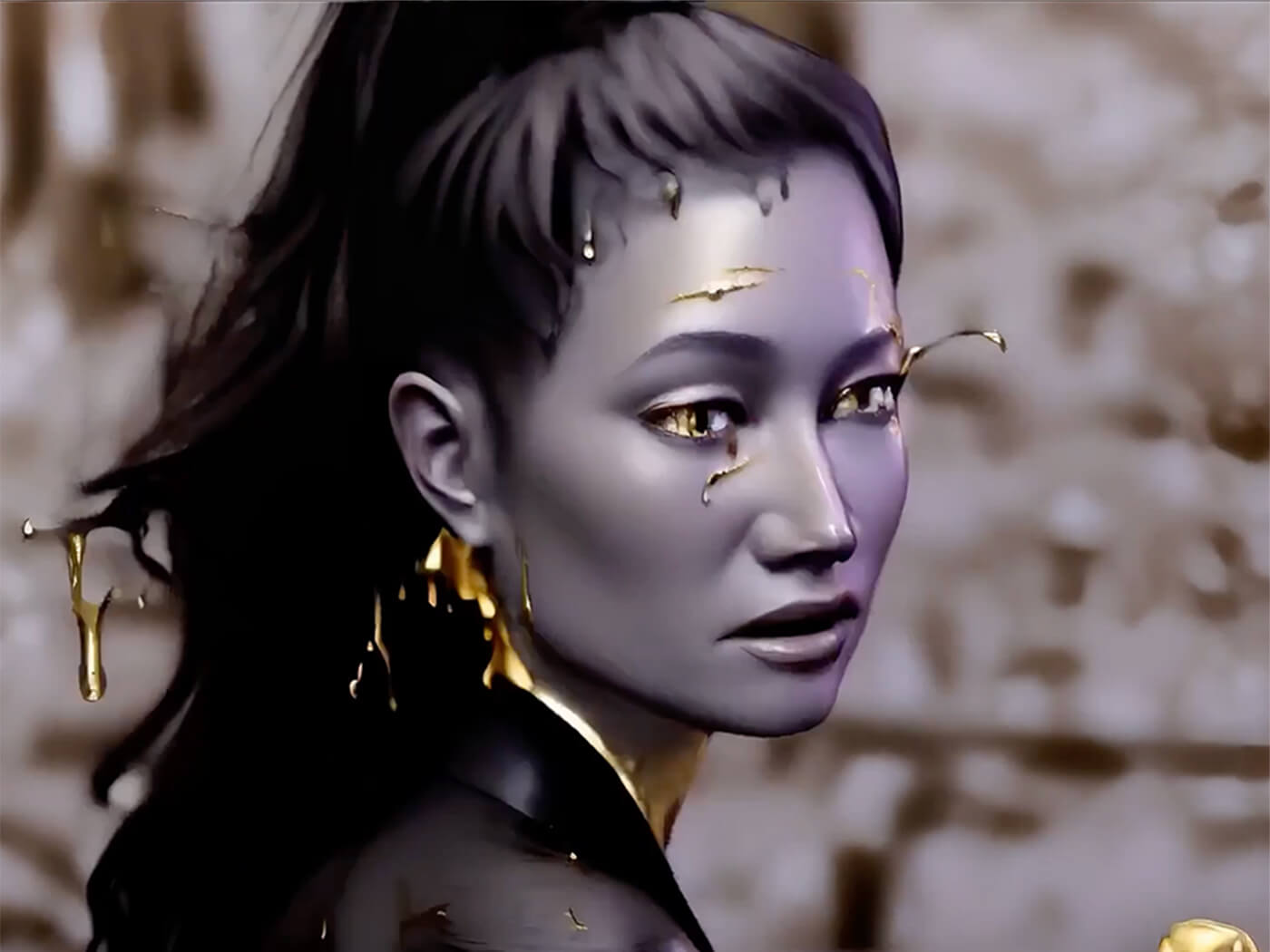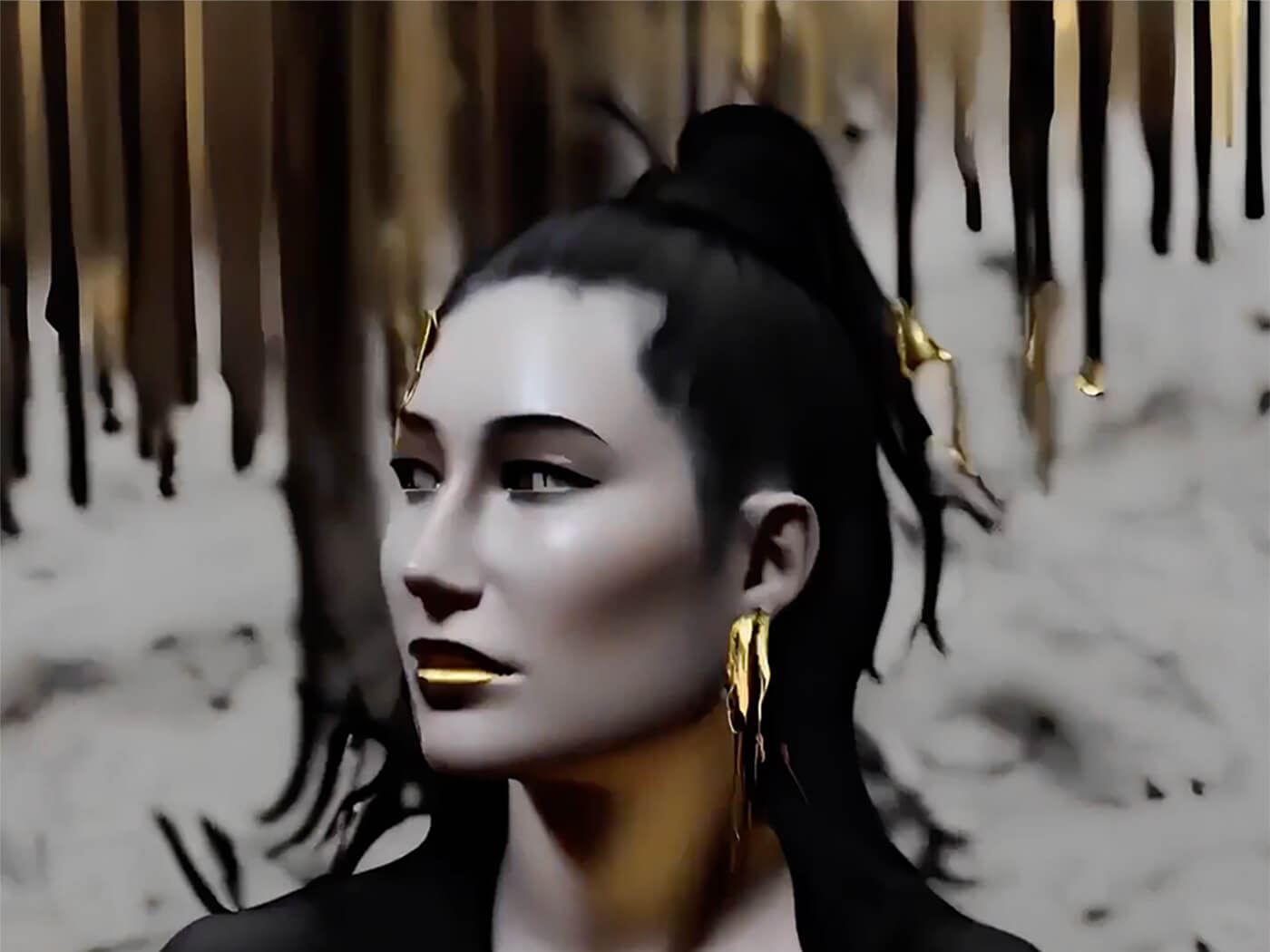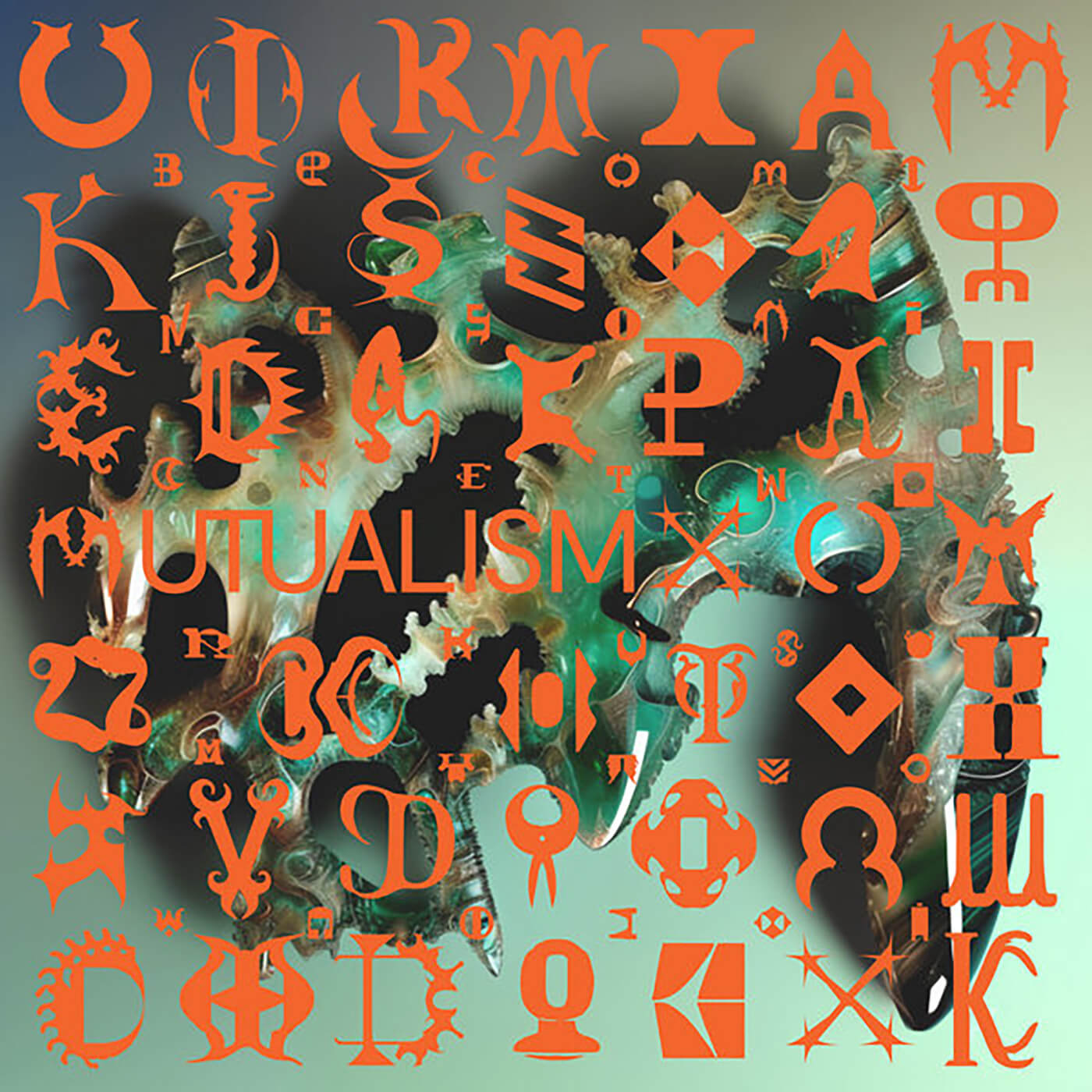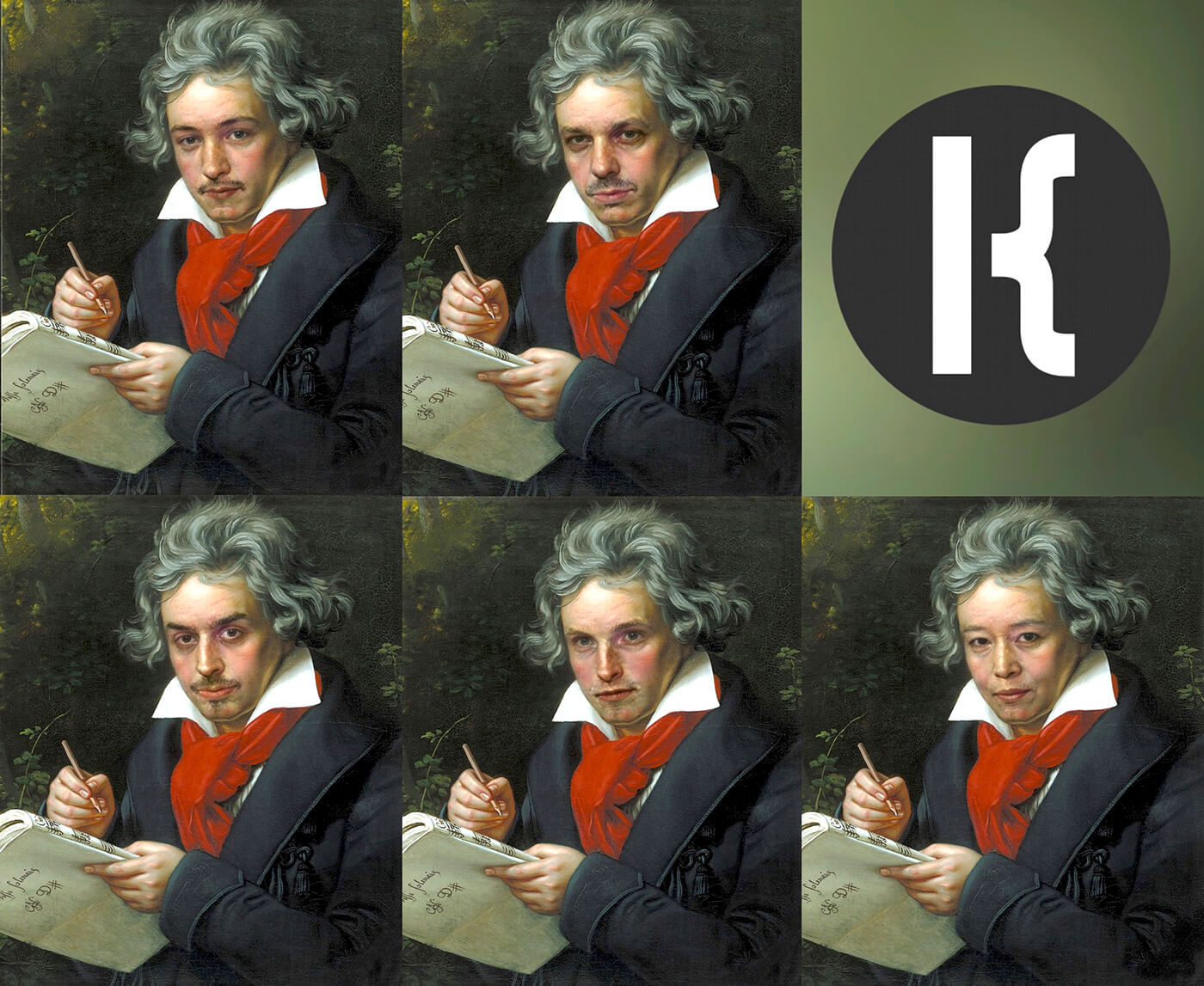From Kraftwerk to AI – Berlin’s love affair with music technology is stronger than ever
We speak to the independent producers, songwriters, and composers at the forefront of Berlin’s emerging AI music scene

Hexorcismos
Like zuckerguss on a zimtschnecken, Berlin and electronic music are perfect companions. For decades, the city has been synonymous with multi-day raves, synth savants, and software start-ups. Hell, the city’s techno culture has been inducted into UNESCO’s cultural heritage list.
Unsurprisingly, Berlin’s musos have been out in front when it comes to AI. There’s Holly Herndon with her ground-breaking Holly+ vocal model, Hildur Guonadottir with her AI-inflected soundtrack to Battlefield 2024, Endel’s adaptive music engine, and DADABOTS’ infinite death metal generator. Something is clearly happening here — and we want to know what.
So, we sought out some of the artists working at the grassroots level to find out what’s drawing them to AI, how they’re using the technology, and why Berlin is emerging as a hub for AI music.
For Portrait XO, it was the allure of software companies like Ableton and Native Instruments that first prompted the singer-songwriter to move her life from the US to Germany.
“I came to Berlin specifically because my favourite music tech brands are here,” she says. “I knew I’d be coming to a place where I can nerd out and meet the kind of people I wanted to connect with.”

Always on the lookout for new tools and new ways of making music, Portrait XO says she first became aware of AI’s creative potential in 2017 after CJ Carr of DADABOTs shared some of his early research with her. A couple of years later, the pair undertook a joint art residency at Factory Berlin to train an AI model on the singer’s voice.
After providing an hour-long supercut of vocals, Portrait XO says she got back hundreds of “fascinating and eerie” audio clips. Featuring disjointed lyrics, fragmented melodies, and idiosyncratic vocal techniques, it was unlike anything the artist had heard before – and certainly unlike anything she would normally sing.
“The sound of AI was so new to me,” she recalls. “It felt like DADABOTS hacked my entire identity, my relationship to myself as a songwriter, my frustrations with my own voice, and shattered it all into a billion pieces.”
Picking up those pieces and trying to turn them into coherent music would have daunted many, but Portrait XO says she found it creatively energising. Adopting a technique she describes as “fill in the blank’ song-writing”, the artist’s 2022 debut album, Wire, is a collage of generated vocal clips, fleshed out with additional instruments and production.

“It felt so inspiring to use AI as a collaborative sparring partner,” she reflects. “I think this is the most revolutionary way for an artist to reinvent themselves, if they wish to.”
Another Berlin transplant pushing the frontier of AI music is Moisés Horta Valenzuela. Originally from Tijuana, Mexico, he releases music under the pseudonym, Hexorcismos, and has produced a series of AI-powered albums since moving to Germany in 2016.
“There is an openness to the music scene here,” he says of his experiences in the city. “You’re meeting people from all over Europe and all over the world, everyone is sharing these very idiosyncratic approaches to making sound. There’s a willingness to try new things.”
His most recent project is Semilla AI, a neural audio synthesis engine that takes its inspiration from the traditional Mesoamerican divination practice of seed throwing. “Divination is a practice of uncovering meaning from randomness,” Valenzuela explains. “When you’re working with neural networks, you generate sounds by injecting random noise, essentially random ‘seeds’, into the network. My approach is to embed these ancient indigenous traditions into the instrument design.”
Turning the instrument over to his friends and peers, Valenzuela set to work on MutualismX, a compilation album made using Semilla AI. Each featured artist curated a dataset from their own musical back catalogue and then used the resulting AI model to write a track for the album. Throughout the process, Valenzuela says, it was important that everyone knew what data was going into the model, and that whatever came out was attributed back to the artists.

“I’m very critical of text-to-music models,” states Valenzuela. “Not because they don’t have creative potential, they do, but because they obfuscate the artist and the music that went into the dataset – often using music that was taken without the artist’s consent. With this album, nothing is hidden and every artist is present.”
Semilla AI is notable not only for its unusual approach to instrument design but also because it actually is an instrument, with an interface not too dissimilar from a traditional synthesizer. “There are very few tools with a graphic user interface that allows you to directly interact with the algorithm,” Valenzuela says. “So, the idea was to democratise the technology and make it more accessible to musicians.”
Ktonal, a loose collective of freelance composers and coders set out with similar goals after connecting at university. Over the past few years, the group has published a selection of open-source tools and provided a series of free workshops for the Berlin School of Sound.
“We wanted to enable composers and artists not to depend on big, pre-trained models, but to be able to train their own data,” says the group’s chief programmer, Antoine Daurat. He cites an experiment the group carried out with a modal trained on the sound of medical equipment. “Google has no interest in training on such materials – but this is something that can have a lot of artistic value.”

Experimental sounds are only part of the attraction, says fellow Ktonal member, Genoël von Lilienstern: There’s this large variety of new editing techniques that are coming from AI. Stem separation, reverb removal, extending a sound indefinitely, timbre transfer…These are all things that were not possible five years ago.”
As exciting as all that is, the groups’ free workshops invited some pushback. “There was still a lot of scepticism and fear,” recalls Daurat. “Most of the debates around creativity and AI were very binary. There was no middle ground.”
These days, he says the people coming to the workshops are more likely to arrive with open minds, and big ideas. “They’re always very excited and then, perhaps, a little disappointed,” Daurat remarks. “Because they realise how much time it takes and how tricky it is to get something actually good.”
That struggle is “a little bit addictive”, adds von Lilienstern. “You’re always trying to find a good mix of parameters. It’s a bit like alchemy: you’re trying to synthesize gold and, mostly, you don’t get there, but it’s a lot of fun.”

In that sense, Berlin’s AI experimenters are not so different from those electronic music pioneers messing around on synthesisers back in the 70s – tweaking parameters, trying to shape a sound, hoping to stumble across something exciting. As Daurat puts it: “The real promise of AI is not to give a prompt and get back a perfect piece of music – it’s the opposite. It’s feeding in a piece of music and getting back raw materials, new interpretations, new patterns, things I couldn’t reproduce.”
So, why is there so much creative activity happening in Germany’s capital city, even as most of the big-money R&D remains clustered in Silicon Valley?
Valenzuela ties it back to the country’s historic association with electronic music. “It might sound ridiculous but I think it’s because Germany had Kraftwerk,” he says. “Techno culture and club culture have been part of this place for a long time, it’s an embedded tradition.” Before Kraftwerk, of course, was Karlheinz Stockhausen — another key figure in pushing forward experimental electronic music.
In Portrait XO’s opinion, however, it’s the open and accepting culture that permeates the city: “There’s a space here for whatever you want to do. Experimental avant-garde performances, exhibitions, talks, workshops, refined contemporary art — it’s a city that has an audience for anything and everything.”
Tradition and an engaged public are surely part of it, but another key aspect is the country’s uncompromising commitment to the arts and its accessible artist visa program.
“Berlin has always been very welcoming to artists, going back 30 or 40 years,” Daurat says. “Nowadays, every artist comes to Berlin and there’s always more coming.”
Duarat, who grew up in France, says he likes the lack of cultural centralisation in Berlin. “In Paris there are some really strong institutions that kind of set the agenda,” he says. “It’s much easier here to find a topic that interests you, to make it your own, and to capitalise on it as an artist.”
The counterweight to this is that, while there’s significant funding for the arts generally, there isn’t a centralised focus on AI music specifically. This lack of targeted funding can be both positive and negative, in Daurat’s opinion. “There is no official structure to support and accelerate this development in AI music,” he points out. “On the other hand, there is a strong sense of individual freedom and liberty here.”
It’s a paradigm that has led to a loose and at times disjointed network of creatives across the city; everyone exploring the contours of AI technology in different ways. Can that network build itself into a genuine music scene? Perhaps, but maybe that’s not the point.
The sheer variety of technological approaches and musical styles is what makes this all so exciting – Berlin’s decentralisation may be a feature, not a bug. “The scene is in splinters right now and we don’t really have a centre,” von Lilienstern ponders. “But that is not necessarily a bad thing.”